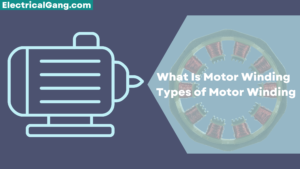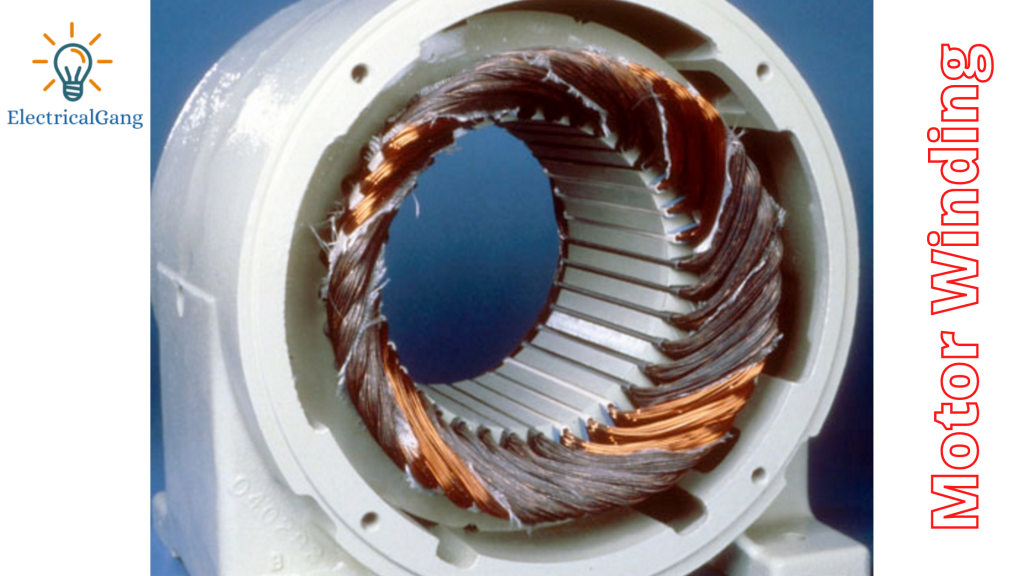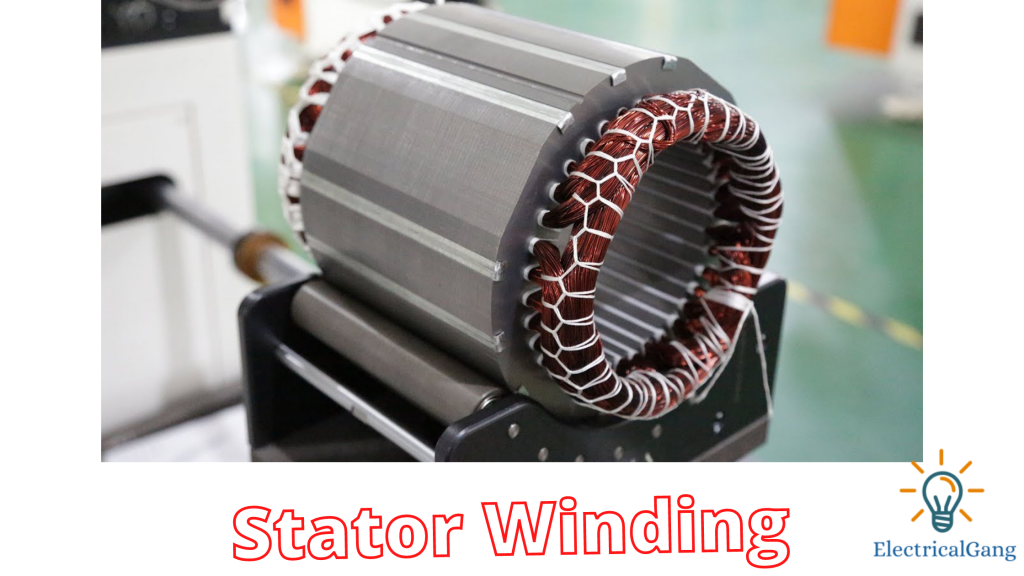
An electric motor is an electrical machine that converts electrical energy into mechanical energy. This motor is powered by DC and AC. We have batteries in the form of DC sources while we have inverters, power grids, generators, etc. in the form of AC sources. Most of the motors work on the principle of interaction between electric currents as well as the magnetic field in the wire winding.
This shaft can generate force in the form of rotation. The function of a generator is very similar to that of a motor in which mechanical energy is converted into electric energy. Parts of an electric motor include a stator, rotor, winding, bearing, and commutator. The classification of a motor depends on its construction, type of power source, speed output type, and use.
In today’s article, we will talk about what motor winding is and how many types it has.
What is Motor Winding?
An electric motor can be defined in such a way that there is only one wire inside the motor which is installed in the form of a coil. The coated flexible iron is usually enclosed around a magnetic core to form magnetic poles when reinforced by the current. Electric machines are available for two basic magnet field pole configurations i.e. main pole as well as a non-main pole.
The Diagram of motor winding is as follows

In a main pole alignment machine, a magnetic field can be generated with a winding wound under the pole face. In obscure pole configurations, the winding pole can be scattered in the face slots. The shaded pole motor consists of a winding that is placed around a pole part that has a phase of the magnetic field.
Suggested Read: Difference Between AC motor and DC motor
Types of Motor Windings
The types of motor windings are as follows
#1. Stator winding.
#2. Rotor winding.
The motor winding can be classified into two sections based on its connection.
#3. Lap winding.
#4. Wave winding.
#1. Stator Winding

The stationary part of the motor is called the stator. The stator winding is done on the slot in the stator of the 3-phase motor. This 3-phase motor is given 3-phase AC power. 3-phase motor windings that are connected in star or delta form depending on the starting method.
The squirrel-cage motor can be mostly on the track from the star to the delta stator so the stator of the motor can be attached to the delta. Slip ring 3-phase induction motor resistance is used which makes it more popular in the market. Thus the stator winding star of a slip ring 3-phase induction motor may otherwise be in delta form.
When this motor is supplied it is excited and generates a magnetic field (RMF) in the rotating part.
Suggested Read: What Is an Induction Motor | Types of Induction Motor | Advantage of Induction Motor
#2. Rotor Winding

The rotating part inside the motor is known as the rotor. The rotor core consists of the rotor core and the rotor winding. The rotor is excited with the help of a DC supply The rotor is classified into two sections one is a phase wound and the other is the squirrel cage.
The squirrel cage is cylindrical at the core of the rotor and is made of iron with a curved slot on the outside of which the aluminum or copper conductor is located.
These are carried short at the ends using copper or aluminum rings in the part at the ends. Electromagnetic induction is the phenomenon of electromagnetic force generated inside a conductor that carries a conductor due to a variable magnetic field. When the current is excited in the rotor it causes the rotor to move.
#3. Lap Winding
Lap winding is a type of armature winding. With the help of a conductor, connections can be made where alleys and poles are connected evenly. The end of each armature coil is connected to the commutator.
The number of brushes inside the winding is equal to the number of parallel lanes. These are equally divided into two polarizing windings positive and negative. Lap windings are mainly used in high-current and low-voltage machines. Lap windings are classified into three types which are simplex, duplex, and triplex type.
#4. Wave Winding
Wave Winding includes parallel lanes between both positive and negative brushes. The end portion of the primary armature coil may be associated with the initial portion of the armature coil commutator portion coming within a short distance. In this winding the conductor can be connected to two parallel lanes in the machine pole.
The number of parallel ports can be equal to the number of brushes used for high-voltage and low-current machines.
Motor Winding Calculation
An ohmmeter is used to calculate the motor winding wire. Connect the positive point of the multimeter to the red end of the motor Bill, in the same way, connects the negative point of the multimeter to the black end of the motor. This will cause the reading of the motor winding machine to appear on the screen of the multimeter which is resistant to ohms.
Using an ohmmeter, disconnect the power supply from the motor. Place the meter on the ohm and generally range from 3 to 2 ohms can be expected. If we observe readings like zero and shorten between phases. Normally, if it is open it will be above 2K ohms or infinity.
Like this post? Could you share it with your friends?
Suggested Read –
Very helpful article, sir, Thank you so much for giving us such knowledge.
Your explanation is superb sir
Hi, Vishnu I’ve frequently visiting your website and want to say that your content is vary simple and understandable. Keep working I’m an Electrical Machines Enthusiasts.
Good Luck!!
Thank You